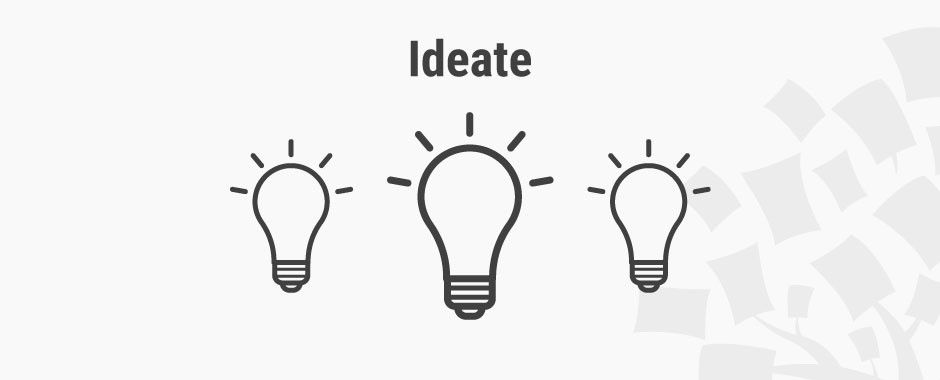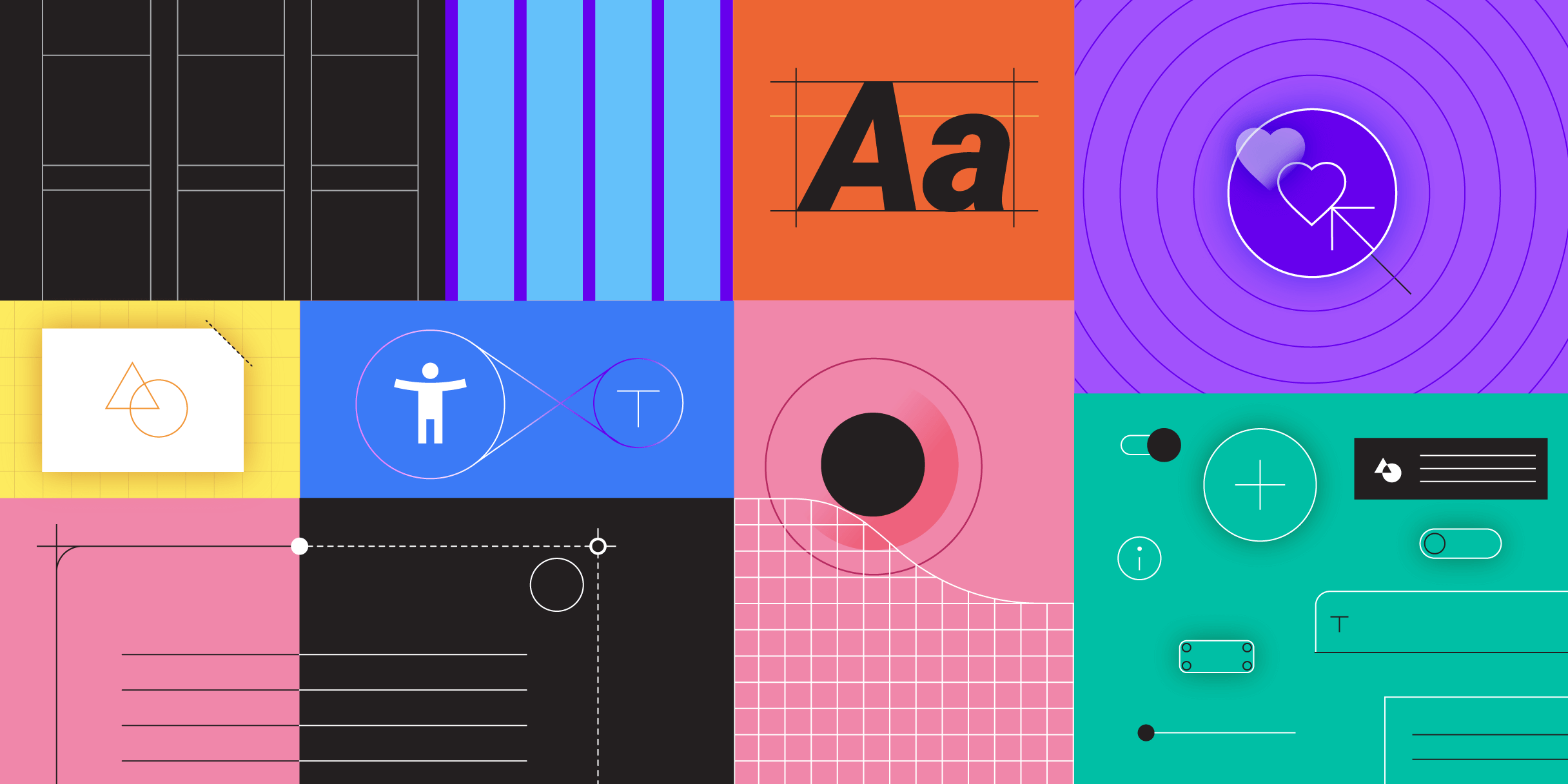Design Thinking: A Holistic Approach to Creative Problem Solving
A beginners Guide to Design thinking.

Photo by Daria Nepriakhina 🇺🇦 on Unsplash
Introduction
Design thinking transcends conventional problem-solving approaches; it embodies a mindset that champions innovative solutions and reshapes the landscape of creativity within the design field.In a world where challenges are increasingly complex and dynamic, the importance of creative problem-solving cannot be overstated. Design thinking, more than a process, stands as a guiding philosophy, fostering a profound shift in how we approach and tackle problems.
II. The Core Principles of Design Thinking.

1. Empathy
The Foundation of Design Thinking
In the grand orchestra of design thinking, empathy plays the role of the conductor, guiding and harmonizing the entire process. It is the cornerstone upon which successful design solutions are built, the foundation for creating products and services that truly resonate with users.
Why is Empathy Vital?
Imagine designing a car without understanding the needs and desires of drivers. The result would likely be a vehicle that fails to address their pain points and struggles to gain their acceptance. Similarly, design without empathy leads to solutions that are mismatched with user expectations and ultimately fall short.
Empathy allows us to:
Uncover hidden needs and desires: People often don't explicitly articulate their needs and desires. By employing empathy, we can observe their behavior, listen attentively to their stories, and delve into their emotions to uncover the underlying motivations and aspirations that drive them.
Identify pain points and frustrations: By observing users in their natural environments and interacting with existing solutions, we can identify the challenges they face and the frustrations they experience. This understanding is crucial for designing solutions that address these pain points and alleviate their suffering.
Develop meaningful connections: Empathy fosters a connection between designers and users. By understanding their perspectives and experiences, we can build trust and create solutions that resonate on an emotional level, going beyond mere functionality and forming genuine connections.
Methods for Cultivating Empathy:
User research: Conduct interviews, surveys, and observe users in their natural environments to gain firsthand insights into their lives, needs, and challenges.
Personas: Create fictional representations of your target users, including their demographics, needs, goals, and frustrations. This helps designers to stay focused on the user throughout the design process.
Empathy mapping: Visualize the user journey and map out their thoughts, feelings, and actions at each stage. This helps designers to identify opportunities to address pain points and enhance the user experience.
Examples of Empathy in Action:
Nike: Empathized with athletes' desire to break records and push their limits, leading to the development of innovative athletic wear and footwear.
Airbnb: Recognized the need for authentic travel experiences and developed a platform that connects travelers with local hosts, creating meaningful connections and fostering cultural exchange.
Procter & Gamble: Observed mothers' struggles with diaper leaks and developed Pampers, a revolutionary diaper that addressed their needs and significantly improved the lives of parents and babies.
Empathy is not a one-time exercise; it is a continuous journey of understanding and connection. By incorporating empathy into every stage of the design process, from ideation to testing and implementation, we can ensure that our solutions are truly user-centered and deliver the impact we strive for.
Remember, empathy is not just about understanding users; it's about feeling their joys and sorrows, sharing their experiences, and creating solutions that truly touch their hearts.
2. Define
Reframing problems to uncover innovative solutions
Here, we transform into problem solvers. It's akin to turning a Rubik's Cube, shifting perspectives to reveal new dimensions of a challenge. It's about saying, "Let's look at this puzzle in a completely different way."

Imagine a Rubik's Cube a perplexing puzzle of colors and configurations. Similarly, the "Define" stage is about challenging the conventional view of a problem. We rotate the mental facets, exploring it from various angles until new patterns emerge.
It's the art of shifting perspectives, urging us to break away from preconceived notions. Much like turning the Rubik's Cube to align colors, we twist and turn our understanding of the problem, seeking fresh angles that redefine its nature.
The "Define" stage is the symphony conductor orchestrating the harmony of possibilities. It prompts us to ask, "How might we perceive this issue differently?" By reframing problems, we unravel innovative solutions, uncovering the beauty in complexity.
Consider Airbnb's approach when faced with the challenge of creating trust between hosts and guests. They didn't just tackle a trust issue; they redefined it as an opportunity for users to build connections. It's a testament to how redefining a problem paves the way for groundbreaking solutions.
In essence, "Define" is the Rubik's twist of design thinking—a strategic, deliberate effort to see the unsolved puzzle from all angles. It's a commitment to embracing complexity and finding elegant, innovative resolutions within it.
Remember, every problem holds a spectrum of solutions. The magic lies in how we redefine, not just what we define.
3. Ideate: Generating creative ideas

In the realm of design thinking, ideation stands as a pivotal phase, a moment where creative sparks ignite and innovative ideas take flight. It's a stage where designers step away from the constraints of reality and delve into a boundless realm of possibilities, exploring the uncharted territories of potential solutions.
Ideation, in its purest form, is the act of generating ideas, a process of brainstorming, sketching, and exploring concepts without limitations. It's a time to unleash the boundless creativity that resides within, to let imagination run wild, and to challenge the boundaries of what's possible.
Within the design thinking framework, ideation occupies a central role, bridging the gap between understanding and creating. Having gained deep insights into the problem and the needs of users through the empathy and define phases, designers embark on ideation to transform these insights into tangible solutions.
The Power of Ideation
Ideation empowers designers to explore a vast array of possibilities, venturing beyond the obvious and into the realm of unconventional solutions. It's a stage where serendipity and chance encounters play a part, leading to unexpected breakthroughs and innovative concepts.
Setting the pace for critical thinking
To foster an environment conducive to ideation, it's essential to create a space where creativity thrives. This involves encouraging active participation, embracing diverse perspectives, and setting aside judgment.
Ideation Techniques
Designers employ a variety of techniques to facilitate ideation, each designed to stimulate creativity and spark innovative thinking. Some commonly used techniques include:
Brainstorming: A group brainstorming session encourages the rapid generation of ideas, where quantity over quality is the initial focus.
Mind Mapping: Visualizing ideas through mind maps allows for organizing and connecting concepts, creating a non-linear representation of thoughts.
Sketching: Quickly sketching out ideas on paper or digital canvases helps designers communicate their concepts visually, capturing initial thoughts and potential solutions.
Card Sorting: Categorizing ideas using cards enables designers to group and organize concepts, revealing patterns and relationships between ideas.
Storyboarding: Creating a visual narrative that illustrates the user's interaction with the product or service provides context and understanding of the proposed solution.
Through effective ideation, designers can:
Expand their creative horizons:
Consider multiple perspectives
Reduce the risk of overlooking potential solutions: I
Foster collaboration and innovation
Ideation, a cornerstone of design thinking, empowers designers to unleash their creativity, explore unconventional paths, and generate solutions that truly address the needs of users. By embracing ideation and fostering a creative environment, designers can transform their innovative ideas into impactful designs that shape the world around us.
4.Prototype
From blueprint to prototype

Turning ideas into tangible solutions
Imagine the first time someone dreamt of a flying machine. It likely began with a crude sketch on a scrap of paper, a spark of an idea yearning to take flight. Similarly, the journey of any design starts with the prototype, a tangible manifestation of abstract thoughts and aspirations.
Think of it like building a miniature version of your grand design. A prototype serves as a bridge between the intangible world of ideas and the concrete realm of reality. It allows you to:
1. Breathe Life into Ideas:
Transforming abstract concepts into something you can hold, touch, and interact with is a crucial step in the creative process. Prototyping gives your ideas a tangible form, allowing you to visualize their potential and identify any flaws early on.
2. Facilitate Exploration and Refinement:
Prototypes aren't meant to be perfect works of art. They exist to be explored, tested, and refined. By building low-fidelity prototypes quickly and iteratively, you can experiment with different solutions, gather valuable feedback, and identify areas for improvement before investing significant resources.
3. Foster Collaboration and Communication:
Prototypes provide a shared language for designers, stakeholders, and users to understand and discuss the design intent. They act as a physical representation of your vision, facilitating collaboration and ensuring everyone is on the same page.
4. De-risk the Design Process:
Prototyping allows you to test your assumptions and identify potential issues early on, saving you time, money, and resources in the long run. By catching errors and addressing usability problems before final production, you can reduce the risk of failure and ensure your design is successful.
From Sketches to Reality:
Prototypes can take various forms, from basic sketches and wireframes to more sophisticated 3D models and working prototypes. The level of fidelity depends on the stage of the design process and the specific needs of the project.
Examples of Prototyping in Action:
Architects: Build scale models and mockups to visualize their designs and discuss them with clients and stakeholders.
Fashion designers: Create rough sketches and sew prototypes to test the fit and style of their garments.
Software developers: Develop low-fidelity prototypes to test user experiences and gather feedback before writing code.
5. Test
Gathering feedback and refining designs
Our superhero journey demands validation. We test our prototypes with real users, gathering insights and reactions. It's akin to an exclusive movie preview, allowing us to tweak and enhance our designs based on valuable feedback, ensuring they captivate and resonate effectively. 🌟
Think of it as an exclusive movie preview, where real users get a glimpse into your creation and provide invaluable insights. Their reactions and experiences fuel the iterative process, allowing you to:
1. Identify Usability Obstacles:
Even the most brilliant designs can harbor hidden flaws. By observing users interact with your prototypes, you can identify any confusing elements, cumbersome interactions, or areas that deviate from user expectations.
2. Validate Your Design Decisions:
Testing allows you to see if your design choices are actually meeting user needs and achieving your desired outcomes. Positive feedback reinforces your direction, while negative feedback provides invaluable opportunities for improvement.
3. Uncover Unexpected Needs:
Sometimes, users surprise you with their unique needs and perspectives. Through testing, you may discover previously unknown challenges or desires that your initial design may not have addressed. This opens doors to further innovation and refinement.
4. Cultivate User Confidence:
By actively involving users in the design process through testing, you build trust and a sense of ownership. Users are more likely to adopt and advocate for a design they have helped shape and improve.
Methods of Testing:
Testing can take various forms, from individual interviews and usability testing to surveys and A/B testing. The chosen method depends on the specific project goals and the stage of the design process.
Examples of Testing in Action:
Website designers: Use A/B testing to compare different versions of a website and identify which one performs better with users.
App developers: Conduct user interviews and usability testing to understand how users interact with their app and identify areas for improvement.
Product designers: Organize focus groups to gather feedback on new product prototypes and refine their designs based on user insights.
Beyond the Test:
The testing phase isn't a one-time event. It's a continuous process of gathering feedback, refining designs, and testing again. This iterative approach ensures your designs are constantly evolving and improving, exceeding user expectations and achieving remarkable results.
So, remember, testing isn't just about validation; it's about sparking innovation, fostering collaboration, and ultimately, creating user-centered designs that truly captivate and resonate.
Real-World Applications
Design thinking transcends theory, finding its power in real-world scenarios where transformative impacts unfold. Explore how this approach has reshaped industries, adding a touch of innovation to the familiar.
1. Healthcare Evolution:
Witness design thinking's influence on healthcare through personalized experiences. Consider Apple's Health app, where intuitive interfaces and seamless integration redefine user-centric care. Here, design isn't just a feature; it's the pulse of empathetic healthcare.
2. Tech User Empathy:
In tech, design thinking isn't a checkbox; it's the language of user satisfaction. Google's Material Design stands as proof, delivering cohesive interfaces that adapt to users' needs across platforms. Tech isn't just functional; it's intuitively crafted for seamless experiences.

3. Consumer Products Reimagined:
From mundane to marvelous, design thinking elevates daily products. Dyson's bladeless fans aren't just cool; they're a testament to reimagining everyday items. The sleek design and user-focused features redefine consumer expectations.
An image of Dyson's bladeless fans

The Iterative Nature of Design Thinking: Embracing Continuous Improvement
Design thinking isn't a linear process with a clear beginning and end. Instead, it's a continuous cycle of exploration, refinement, and learning. This iterative nature is one of the key strengths of design thinking, allowing for continuous improvement and ensuring your designs are truly user-centered.
The Cycle of Iteration:
Empathize: Understand user needs, challenges, and desires.
Define: Formulate the core problem and identify the areas of focus.
Ideate: Brainstorm diverse solutions and explore a wide range of possibilities.
Prototype: Build tangible representations of your ideas for testing and feedback.
Test: Gather user feedback and iterate based on their insights.
Continuous Improvement Through Iteration:
This iterative cycle allows you to:
Refine your understanding of the problem: As you gather feedback, you gain a deeper understanding of user needs and can refine your problem statement accordingly.
Test and validate your assumptions: By prototyping and testing your ideas early and often, you can identify and address any critical flaws before investing further resources.
Learn from user feedback: Every iteration provides valuable insights that can be used to improve your design and ensure it truly meets user needs.
Examples of Iterative Design:
Apple's iPhones: Each generation of iPhone incorporates user feedback and market trends, resulting in a continuous evolution of the product.
Google Maps: The app's features and functionalities have expanded significantly since its initial launch, reflecting ongoing user feedback and technological advancements.
Airbnb: The platform has evolved significantly from a simple lodging marketplace to a comprehensive travel experience platform, shaped by user needs and market demands.
The Power of Feedback Loops:
Feedback loops are an essential element of the iterative process. By actively seeking user feedback at various stages of the design process, you gain valuable insights that can:
Identify usability issues: Users can highlight areas where the design is confusing or difficult to use.
Reveal unexpected needs: User feedback can uncover needs you may not have initially considered.
Validate your design direction: Positive feedback confirms that you're on the right track and motivates you to continue iterating.
Conclusion:
The iterative nature of design thinking is a powerful tool for creating impactful and user-centered designs. By embracing this cyclical approach and incorporating ongoing feedback loops, you can ensure your designs are constantly evolving and improving, exceeding user expectations and achieving remarkable results.